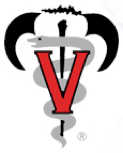
In 2014, the American Association of Bovine Practitioners (AABP) established guidelines for the dehorning and castration of calves. On a regular basis, the AABP reviews and updates its guidelines to make continual improvements over time and to make sure they incorporate the latest scientific evidence and recommendations. In 2019, the AABP separated the guidelines for dehorning (updated November 2019) from castration (updated August 2019).
The updated dehorning guidelines can be found publicly at https://aabp.org/Resources/AABP_Guidelines/Dehorning-2019.pdf or on the AABP homepage (https://aabp.org) under the Home tab. The updated castration guidelines can be found at https://aabp.org/Resources/AABP_Guidelines/Castration_Guidelines-2019.pdf.
“The AABP felt that the topics of castration and dehorning differed enough that it made sense to develop separate guidelines to focus on the issues and considerations specific to each topic,” explains AABP Animal Welfare Committee Chair Dr. Renee Dewell, Iowa State University.
Dehorning cattle is a necessary procedure to reduce the risk of injury to the animal, other cattle and people, and during transportation to slaughter facilities, reduces bruising of carcasses. AABP recognizes the differences in management of newborn calves between the cow-calf and dairy industry in performing this procedure. Because dairy calves are handled daily, the guideline recommends that disbudding/dehorning be performed no later than eight weeks of age. The beef industry has made significant improvements in utilizing polled genetics and currently only 7.8% of beef cattle are born with horns according to the NAHMS Beef 2017 Cow-Calf Survey.
“One significant update in the dehorning guidelines is the recommendation that pain mitigation protocols for dehorning be considered a standard of care,” Dewell says. “This was done to reflect the considerable body of scientific evidence that has shown that calves benefit from pain mitigation protocols associated with dehorning and disbudding procedures.”
“The AABP is the ‘go-to’ organization for government and policy makers when it comes to issues of cattle health, production and well-being,” adds AABP President Dr. Calvin Booker, Okotoks, Alberta. “As a result, it is imperative that the AABP is a leader in developing and updating guidelines and position statements affecting these topic areas.”
Specifically, the AABP Animal Welfare Committee updated the sections in the guidelines on proper restraint, local anesthesia and systemic pain relief.
“The updated guidelines provide science-based recommendations to help veterinarians and producers best raise the animals entrusted to their care,” adds Dewell.
You can find the updated Dehorning Guidelines on AABP’s public page at https://aabp.org/about/AABP_Guidelines.asp, as well as the members-only section at https://aabp.org/resources/AABP_member_Guidelines.asp.
AABP is a membership-based, not-for-profit organization serving cattle veterinary medicine professionals across the United States, Canada and other countries. Visit https://aabp.org and like us on Facebook.


